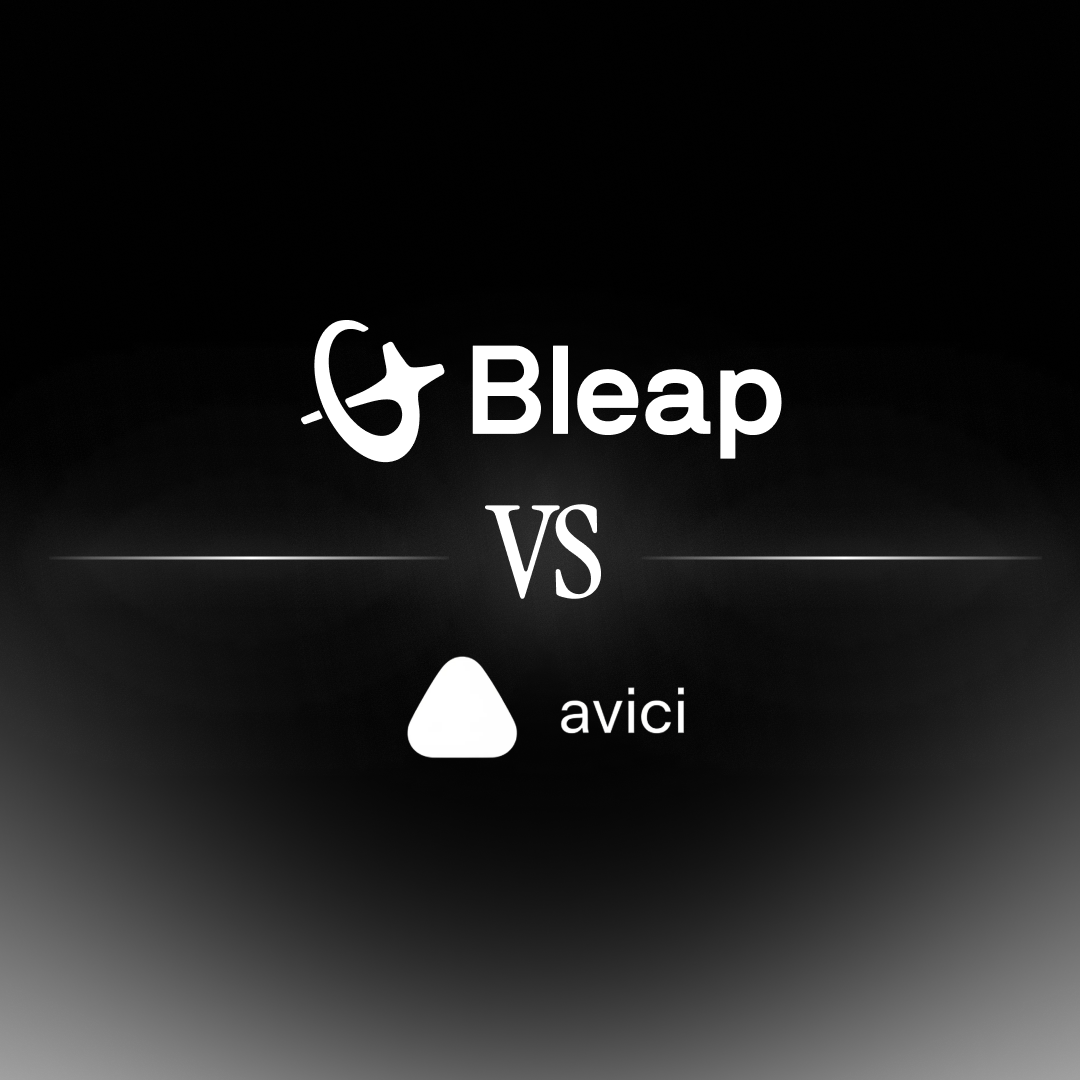
Choosing the right crypto card in 2025 means comparing real spending costs, FX fees, collateral requirements, cashback models, custody structure, and overall user experience. Bleap and Avici Card take fundamentally different approaches: Bleap focuses on a clean, zero-fee model with predictable 2% USDC cashback, while Avici uses a collateral-based credit structure with multiple potential fees, FX costs, and liquidation rules.
This article compares both cards in detail so you can understand which offers the best value for everyday use, travel, and crypto spending.
Avici Card is a Visa card issued by Third National and integrated with a self-custodial wallet. Instead of using a debit balance, Avici creates a collateral-backed spending limit, where users must post digital assets equal to the USD value they wish to spend. The platform supports Ethereum, Polygon, Optimism, Arbitrum, and other chains at the issuer’s discretion.
Avici discloses a list of maximum potential fees, which include FX fees up to 3% (currently 1%), cross-border fees up to 3%, and various ATM charges (e.g., $1 + 0.65% per withdrawal) . Additionally, Avici may apply penalty fees for late payments, returned payments, or liquidation events. The card currently applies 0% APR, but the issuer reserves the right to introduce interest for future purchases at any time.
It is a known and evolving product in the crypto-card space, appealing primarily to users comfortable with posting collateral and managing their spending limits actively. However, Bleap stands out by offering a simpler, more transparent, and more predictable card experience, without FX fees, penalties, or liquidation risks. For everyday users who want clarity and stability in their spending, Bleap provides a smoother alternative.
Bleap provides a non-custodial Mastercard with 2% USDC cashback, zero fees, free ATM withdrawals, and no risk of collateral liquidation. Avici offers a Visa card tied to a collateral-backed credit model with multiple potential fees and dynamic collateral requirements.
The user experience differs significantly: Bleap prioritizes simplicity and predictability, while Avici requires active collateral management.
Bleap eliminates FX fees, spreads, stabilization fees, and penalty costs. Users always spend exactly what they see.
Avici applies multiple possible fees, including:
Avici’s model requires users to post collateral equal to the value they want to spend. For example:
This introduces additional risk: collateral volatility + spending obligations + penalty fees.
Bleap avoids these risks entirely, since it does not require collateral posting.
Consider a user spending €1,000 per month:
Bleap
Avici
Net: –€10 or worse, depending on ATM use and collateral volatility.
Bleap
Avici
Bleap supports major stablecoins (USDC, USDT, EURA, USDA) across eight chains, with access to thousands of tokens.
Avici supports digital assets as collateral across Ethereum, Polygon, Optimism, Arbitrum, and other chains , but collateral must match spending demand.
Bleap
Avici
Bleap’s zero-fee structure, Mastercard FX rates, and free ATM withdrawals make it ideal for international travel.
Avici’s FX fees, cross-border fees, and ATM charges make travel more expensive. Collateral volatility also adds risk while abroad.
Bleap
Avici
Bleap suits users who want clarity:
zero fees, real stablecoin cashback, non-custodial control, and predictable spending.
Avici suits users comfortable with collateralized credit models, dynamic limits, and potential liquidation events.
Avici introduces an innovative collateral-based spending model and may appeal to users familiar with over-collateralized credit structures. However, its FX fees, ATM fees, penalty charges, and liquidation risks reduce accessibility for most users.
Bleap provides a simpler, more transparent, and more valuable experience: 2% cashback in USDC, zero fees, global Mastercard acceptance, and non-custodial control.
For the vast majority of users seeking a cost-efficient, predictable, and user-friendly crypto card, Bleap remains the better choice in 2025.
Features
Improvements
Bug fixes